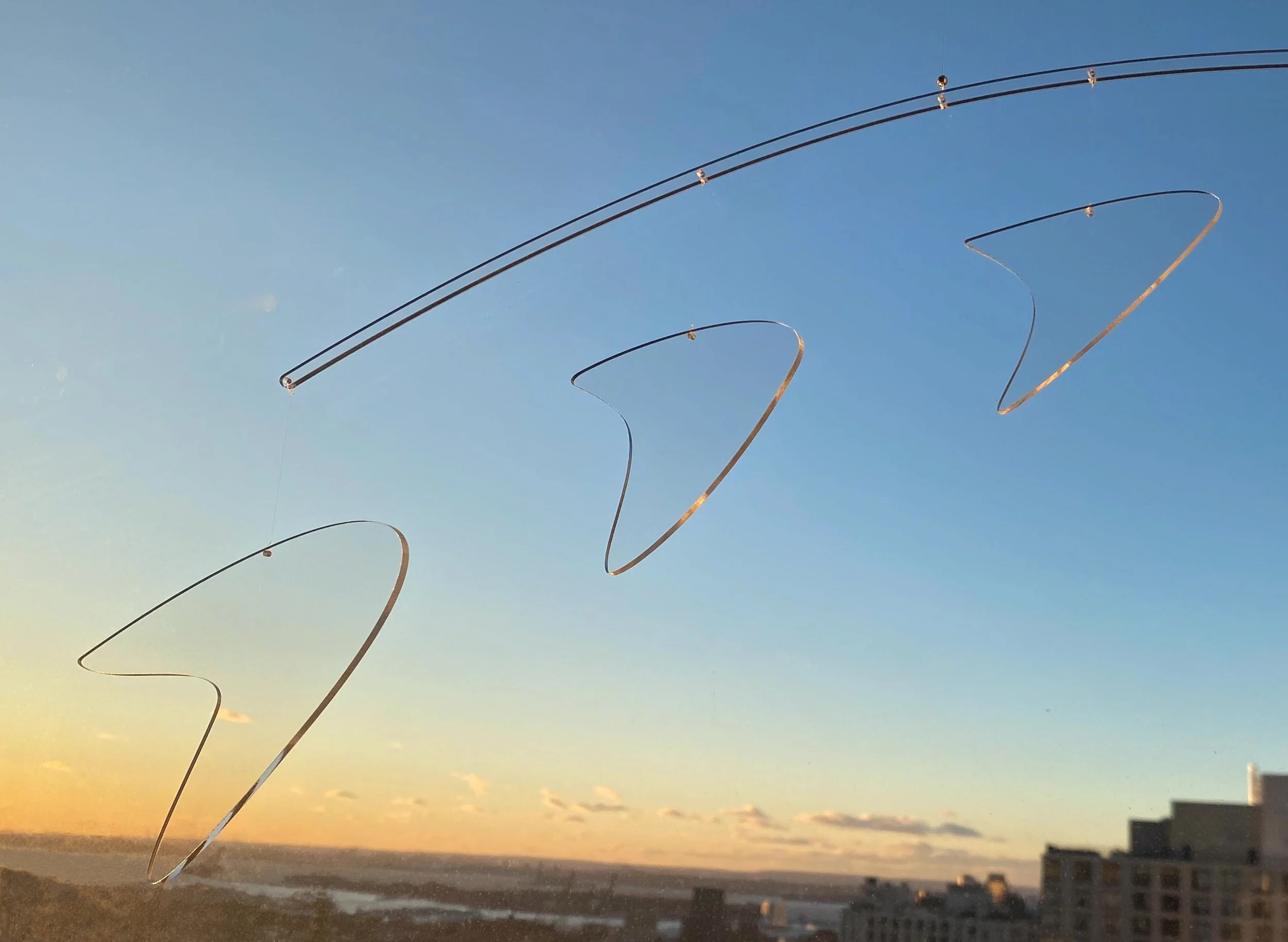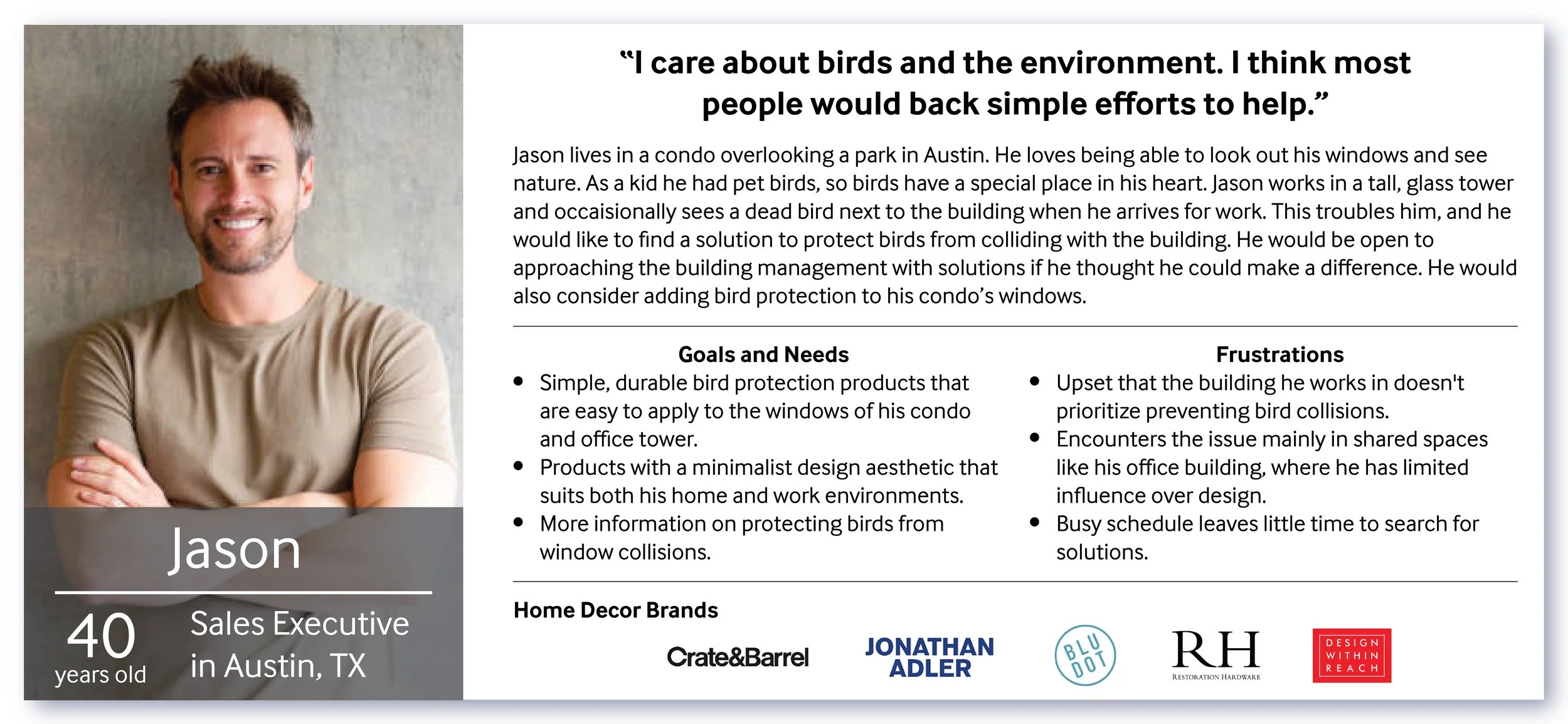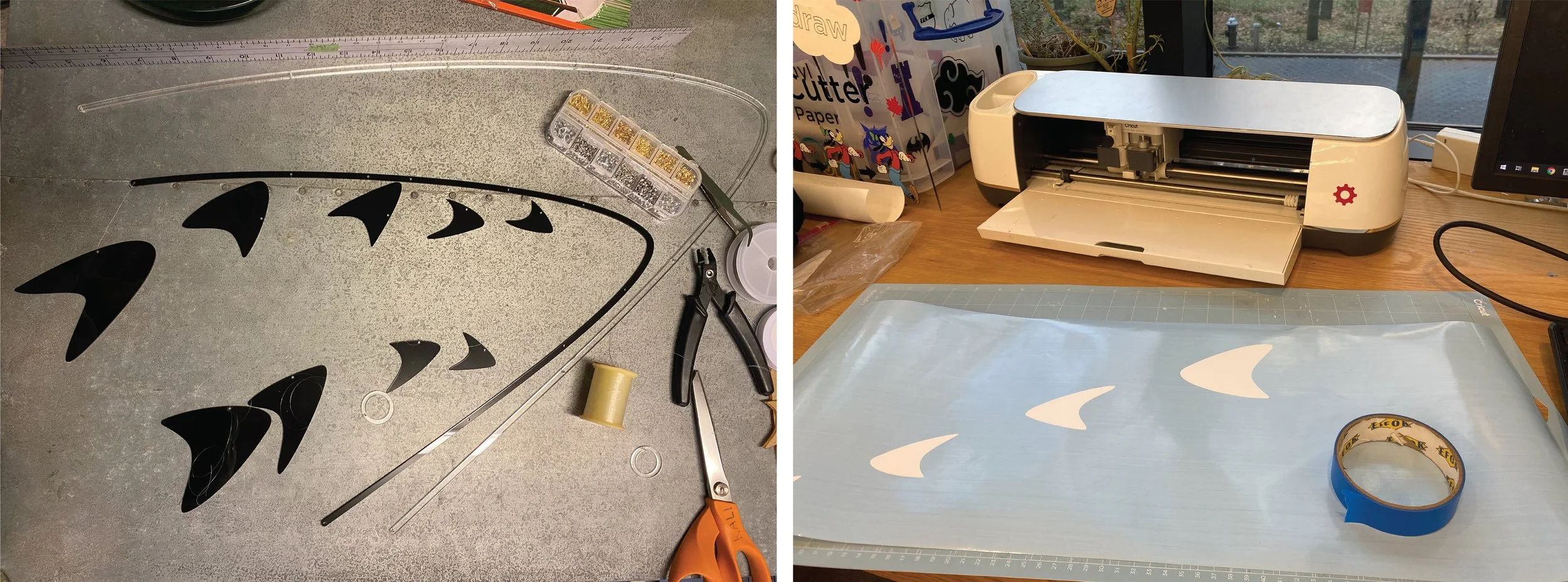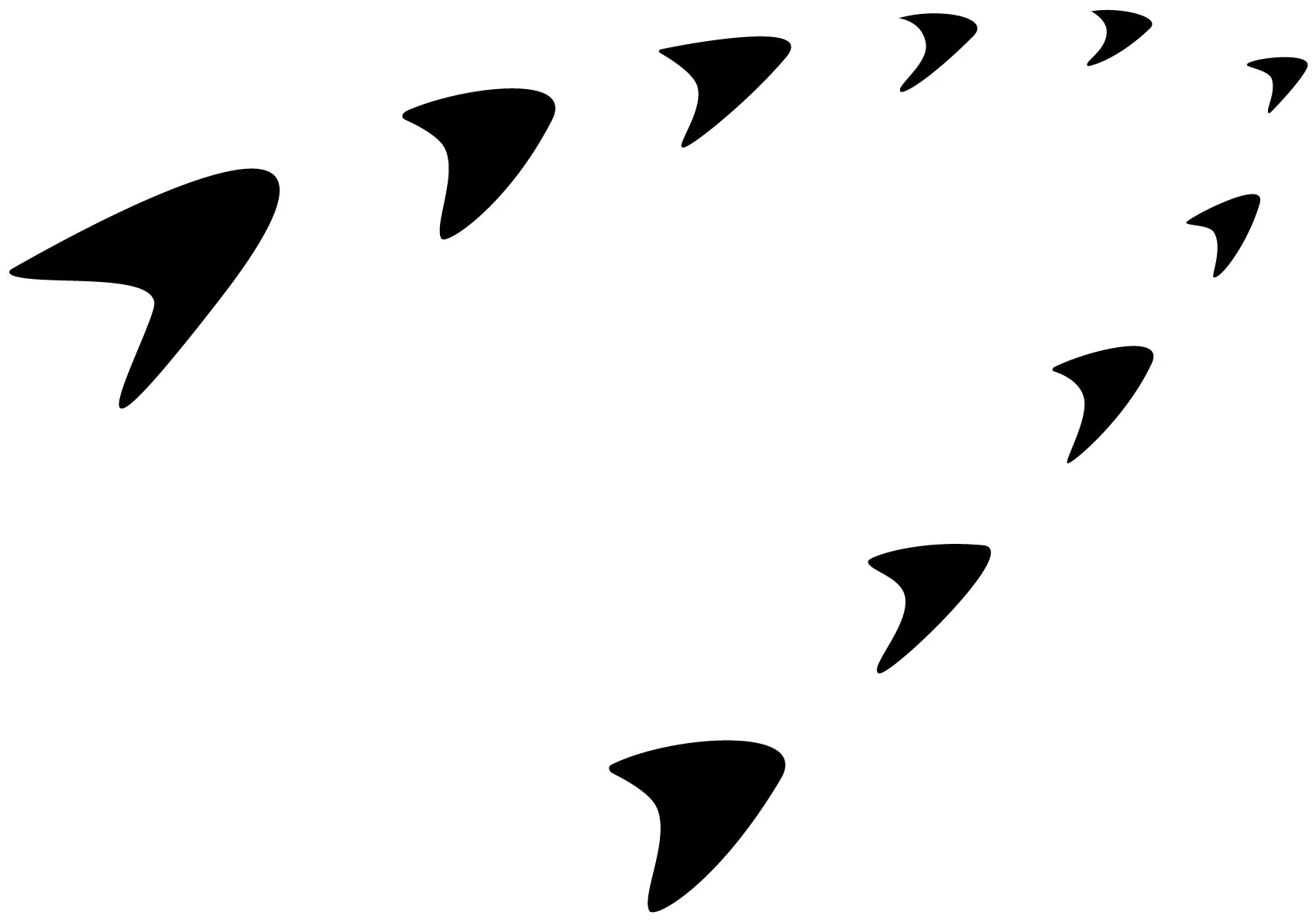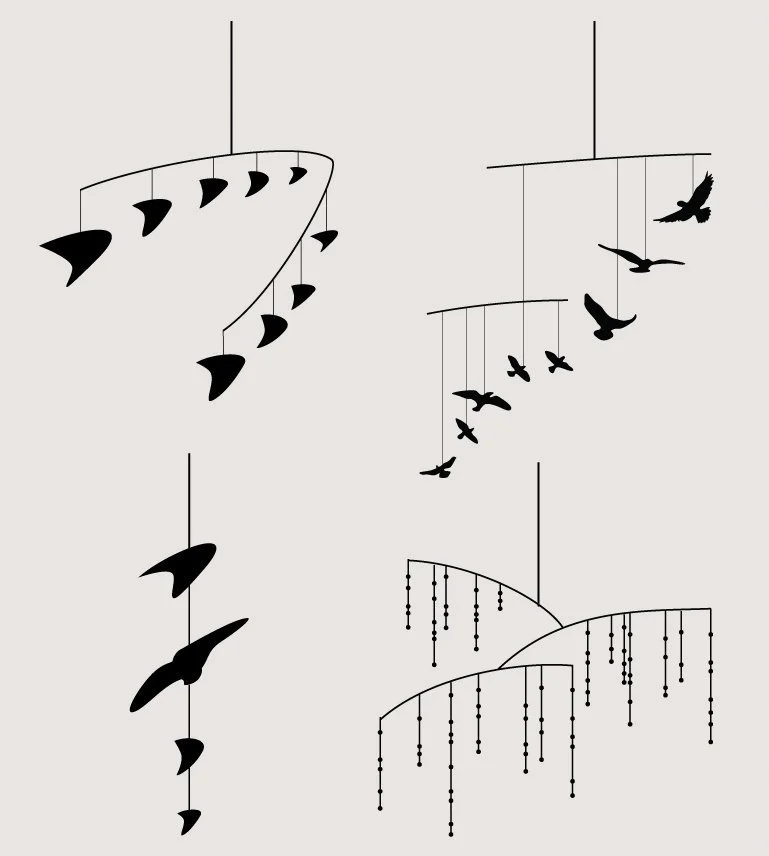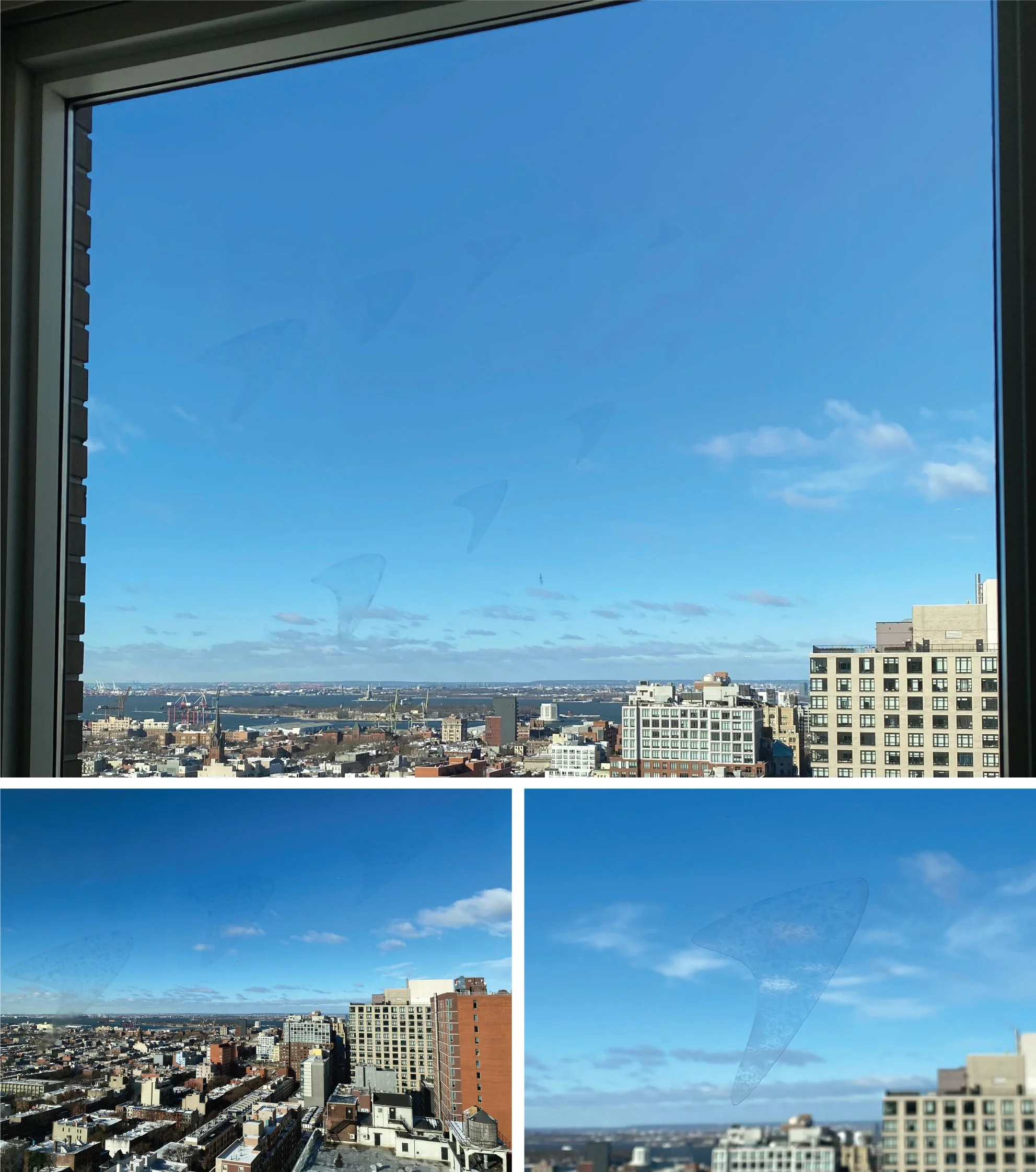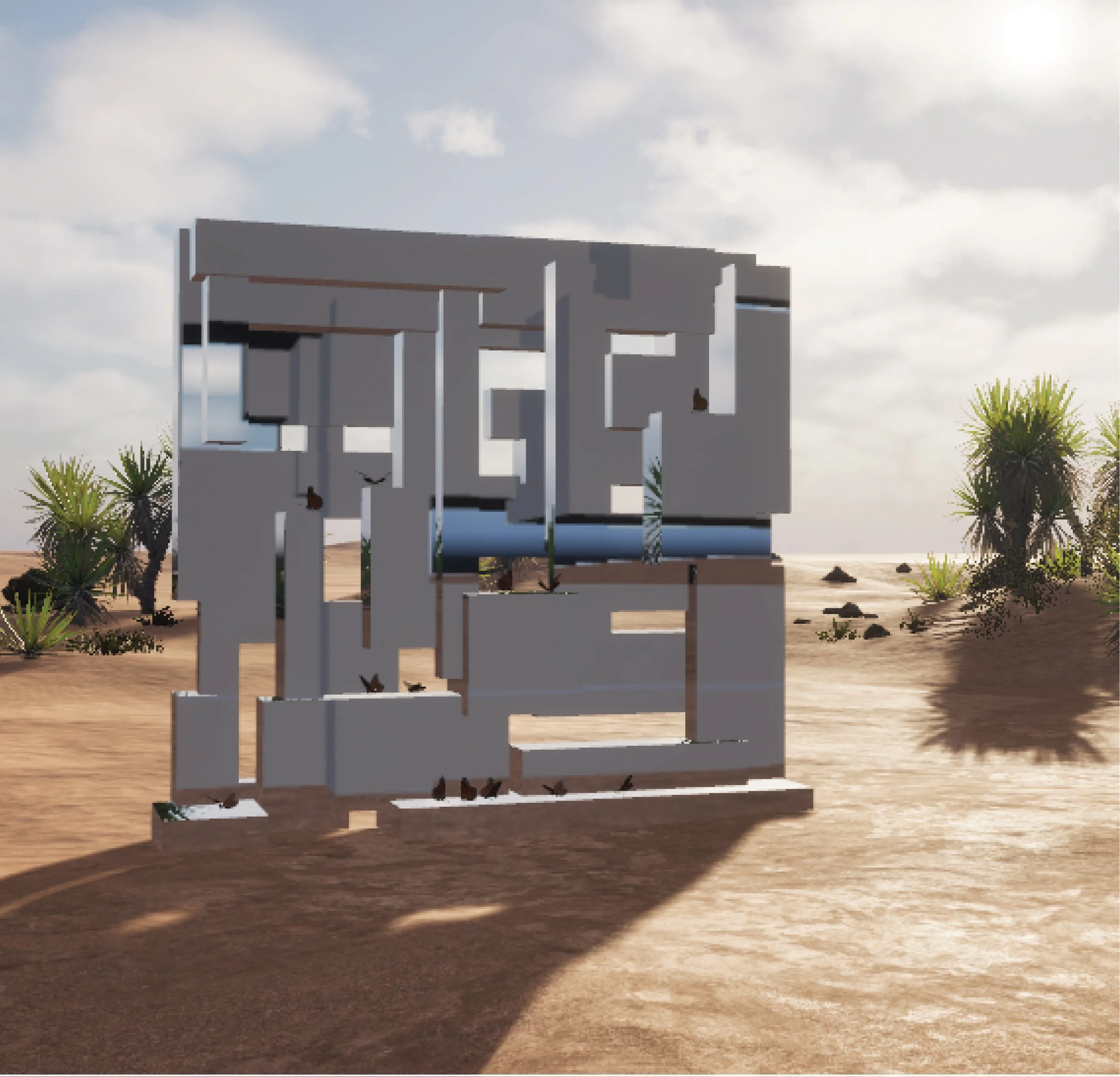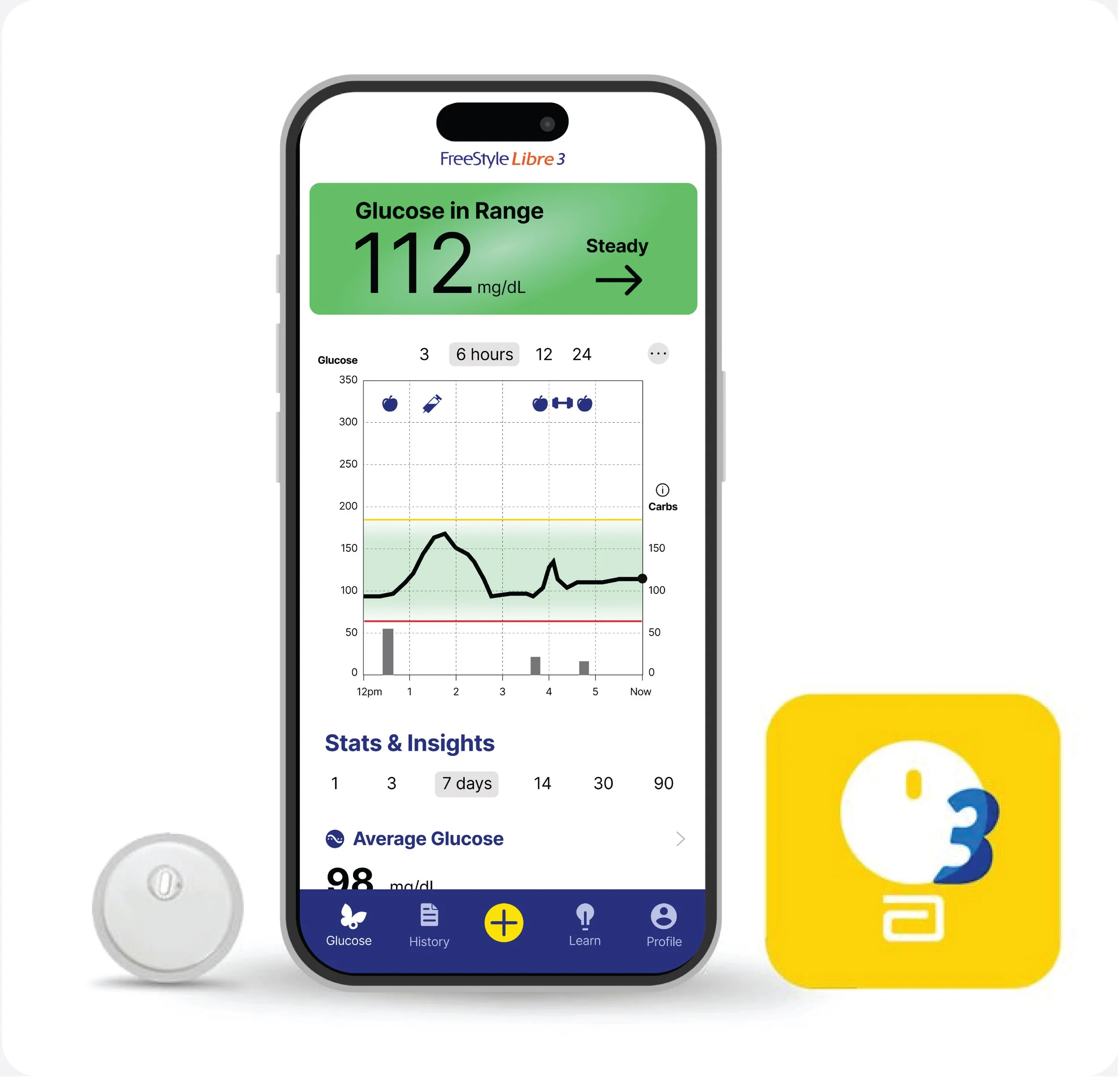
Making the Invisible Visible
Sustainable Design: Protecting Birds From Window Collisions With Biomimicry
Team: Kali Birdsall, Simran Chhabra & Phoebe Pang
My Role: Researcher & Designer
Duration: 4 weeks
Tools: Adobe Illustrator, Laser Cutter, Vinyl Cutter, Cricut
01. Project Overview
A Problem Worth Solving
This biomimicry project began with an open-ended challenge: let nature inspire a design solution to a real-world problem. Through systematic research into natural systems, we discovered how spiders use UV-reflective silk to prevent bird collisions with their webs. This insight led us to address the hidden crisis of bird-window strikes, which kill up to 1 billion birds annually in the U.S.
Using a research-driven design process, we developed two complementary products: UV-reflective window mobiles and UV-reflective clear vinyl decals that make windows visible to birds while remaining aesthetically pleasing (and barely visible) to homeowners. The project demonstrates how deep user research, scientific inquiry, and iterative prototyping can transform a nature-inspired insight into human-centered design solutions.
02. Problem Statement
Up to 1 billion birds die annually in the U.S. from flying into windows that appear invisible to them. Many homeowners, renters and building owners witness these collisions but lack access to effective, affordable, and aesthetically pleasing solutions. This is a problem because these preventable deaths disrupt local ecosystems that depend on bird populations. This is also a problem for homeowners, as witnessing repeated bird strikes causes distress and guilt, yet many are reluctant to install visually intrusive deterrents.
How might we create bird-deterrent solutions that effectively prevent window collisions while meeting homeowners' needs for affordability, ease of installation, and aesthetic appeal?
03. Research & Discovery
Starting with Nature's Solutions
This project began with an open-ended biomimicry challenge: What problems could nature help us solve? Our research process was systematic and multi-layered:
Research Methods:
Scientific literature review on bird vision and behavior.
Expert interviews.
User surveys on home aesthetics and collision awareness.
Material science exploration of UV-reflective properties.
Competitive analysis of existing bird deterrent products.
The Key Insight
Spiders weave UV-reflective silk into their webs to prevent birds from flying through them.
This discovery revealed the solution pathway: birds see ultraviolet light that humans cannot. While a spider's web appears nearly invisible to us, birds can spot these UV signals and avoid collision.
Understanding the Users
Our user research revealed two distinct but connected user groups:
Primary Users (Humans):
64% dad personally witnessed bird-window collisions.
89% valued birds as essential to ecosystems.
75% preferred minimalist home design solutions.
Price sensitivity: half of users surveyed were willing to spend only $15 or less.
Humans cannot see in the UV spectrum (so something clear with a UV coating would be barely noticeable to humans).
Secondary Users (Birds):
Birds can see in the UV spectrum (making anything with a UV coating visible to them).
Birds mistake window reflections for sky or vegetation.
Birds need clear visual warnings at window height.
User Journey Mapping For Primary Users
Current State:
Problem awareness → Concern but no action → Continued bird strikes.
Desired State:
Problem awareness → Easy solution discovery → Simple installation → Problem solved.
Pain Points Identified For Primary Users
Existing solutions are visually intrusive or expensive.
Installation complexity creates barriers to adoption.
Lack of awareness about problem severity.
Uncertainty about product effectiveness.
Personas
We synthesized insights from research, user interviews and our survey data to develop evidence-based personas, representing key user segments in our target market. These personas revealed two critical needs: aesthetic home decor that complements existing interior design, and products that effectively address bird safety.
05. Design & Iteration
Core Challenge
Create a solution that is:
Functional: Prevents bird collisions effectively.
Aesthetic: Complements existing home decor.
Invisible: Barely noticeable to humans, highly visible to birds.
Accessible: Easy to install and affordable.
Key Constraints
UV visibility must be scientifically verified.
Materials must withstand weather exposure.
Installation requires no tools or permanent modification.
Production must be cost-effective for target price point.
From Research to Concept
Our research insights directly shaped our design solutions:
Birds see UV light.
Design solution: Use UV-reflective materials.
Users are less likely to use options that are highly visual or that don’t fit in with their home’s personal aesthetic.
Design solution: Use clear acrylic and clear adhesive vinyl, both with UV-coating, so they are almost invisible to humans, while being visible to birds.
75% of primary users prefer minimalist aesthetics.
Design solution: Design subtle, geometric forms.
50% of primary users prefer window-mounted solutions.
Design solution: Dual product approach.
Easy application is top priority for primary users.
Design solution: Adhesive and easily-hung options.
Right: how birds see our decals (approx).
Left: how humans see our decals.
Mood Boards & Visual Research
Iterative Prototyping
We sketched, laser cut, tested, and refined designs. Prototypes were developed for both aesthetics and functionality.
Acrylic Window Mobiles:
Iterations 1 & 2: Geometric shapes in inexpensive plywood to test design.
Change: Revised some shapes to fix composition. Made curved hanging rod thicker for strength, and moved the holes to adjust balance. Hung with white thread which looked messy.
Iteration 3: Revised geometric shapes cut in black acrylic.
Change: Continued to revise shapes to make more aesthetically appealing. Revised rod thickness again. Used clear fishing line to tie shapes to rod.
Iteration 4: Cut shapes in both UV-coated clear acrylic and black acrylic. Hung with clear fishing line and covered knots with small metal jewelry finishings for a polished look.
Vinyl Window Decals:
Iteration 1: Geometric shapes cut in clear vinyl on large Vinyl Cutter Machine.
Vinyl machine wasn’t working well and destroyed part of our roll of vinyl. Decided to use Cricket Machine to cut next iteration.
Iterations 2 & 3: Geometric shapes cut in white vinyl on Cricket Machine.
Adjusted layout to fit Cricket size requirements. Cut one version mounted on transfer film to help user with correct layout application. Cut additional version that had all shapes fit, not in correct layout, on a smaller footprint.
Iteration 4: Geometric shapes cut in clear UV-coated vinyl on Cricket Machine.
Made shape adjustments and proceeded with the smaller footprint version since it is uses less material which is more sustainable.
Final Prototypes
DECAL
06. Next Steps
Immediate: Pilot program with local buildings for field testing. Partnership with bird conservation organizations.
Short-term: Sourcing suppliers with reliable materials for small batch production. Partnership exploration with local retailers.
Long-term: Potential impact of preventing millions of bird deaths annually if adopted at scale.
07. Impact & Reflection
This project taught us that nature often has the answers, we just have to look closely. By discovering a method spiders use to protect their homes, we found a sustainable way to protect birds, and in turn, our ecosystems.
Designing with biomimicry revealed the power of research to drive creativity, and how meaningful solutions often come from deep understanding. The same research-driven approach that uncovered this biomimetic solution applies directly to all other product design challenges: start with deep user understanding, validate assumptions through testing, and iterate based on evidence rather than assumptions.
What began as an open-ended exploration became a mission-driven design with real-world relevance.
